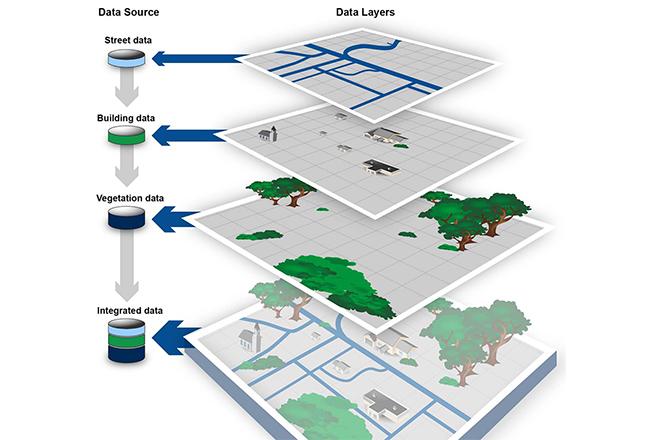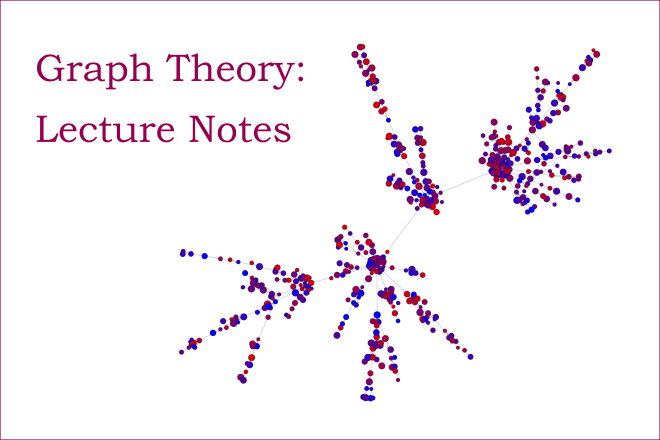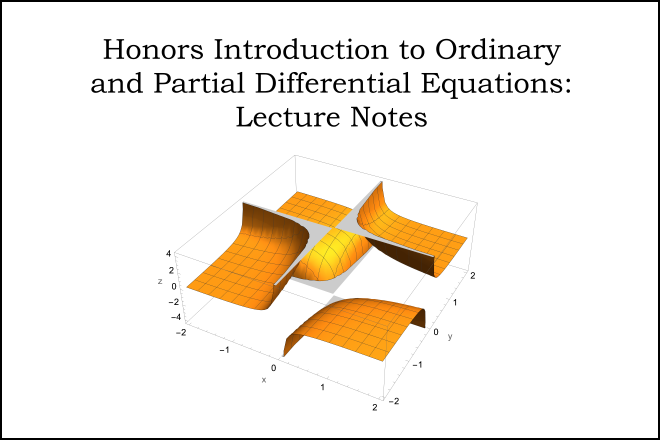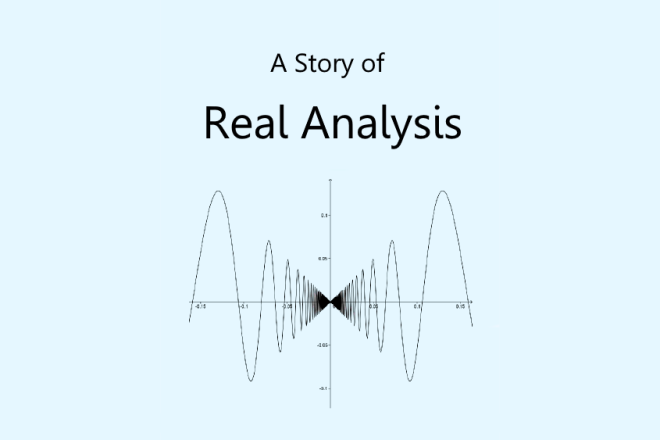Geospatial System Analysis and Design

Credit: GEOSPATIAL DATA: Progress Needed on Identifying Expenditures, Building and Utilizing a Data Infrastructure, and Reducing Duplicative Efforts, from the U.S. GAO report, 2015 is Public Domain
Resource Description
Geospatial System Analysis and Design surveys the process of GIS design through critical reading/writing and collaborative discussion. Key topics in the course outline the broad range of current GIS systems, how they are designed and evaluated, and how emerging technologies may impact their design and implementation in the near future. In particular, students will develop a term-long project where they propose a realistic problem scenario that requires the skills and understanding required to effectively complete a geospatial system specification, design, and implementation. Students completing this course are able to develop a comprehensive system design plan that takes into account current technologies as well as emerging technology trends.Geospatial Technology Project Management

Credit: Time-lapse Photography of Vehicle Lights by Kaique Rocha is free to use
Resource Description
In GEOG 871, we'll take a critical look at geospatial project management. Project management is a broad discipline that encompasses technical methods such as system design and analysis and also interpersonal factors that affect professional relationships. Project management is also a discipline that has matured outside of, but can be incorporated into, geospatial technology. By the end of this course, you'll have devised a project plan from a scenario built upon a real-life project involving the city of Metropolis geodatabase. We'll work through each of the components in an organized and logical manner and will incorporate constructive peer review to help everyone achieve the best product possible.GIS Analysis and Design

Credit: Architectural, design, architecture buildings 425053 by Juhasz Imre is licenced under CC0
Resource Description
Geography 468 provides the geospatial information system professional an overview of systems analysis and design with emphasis on the concepts behind the process, including: business use case modeling, business object modeling, requirements definition, analysis and preliminary design, and, finally, detailed design. The concepts of the geospatial software and database development process are introduced and the current modeling techniques are addressed within the geospatial systems development paradigm. In a series of related activities, students learn about the methods, tools, and concepts of the systems development process to document a portion of a geospatial system with Unified Modeling Language (UML), the standard graphical notation for modeling application needs.GIS Programming and Software Development

Credit: High Angle View of Residential Buildings by Palo Cech is free to use
Resource Description
Bill Gates is credited with saying he would "hire a lazy person to do a difficult job" with the justification that "a lazy person will find an easy way to do it." GEOG 485 doesn't teach the lazy way to get the job done, but it does teach the scripting way — which is arguably even better. You've probably heard the "give a fish"/"teach to fish" saying? That's the gist of GEOG 485: to equip you, in an ArcGIS context, with the ModelBuilder and Python scripting skills to make your boring, repetitive geoprocessing tasks easier, quicker and automatic — so you can focus on the more interesting (potentially more valuable) work that you (and your employers) really want you to be doing.Global Energy Enterprise

Credit: Lobbying 161689 by OpenClipart-Vectors is licensed under CC0
Resource Description
Have you seen a Clean Coal baseball cap? In the challenge to meet soaring energy demand with limited resources, volatile issues like those related to the environment, national security and public health are often addressed outside of normal market transactions and are called externalities, or nonmarket factors. Stakeholders can act in resourceful ways to create a nonmarket environment that best serves their interest. A firm may challenge a law that makes it expensive or difficult to do business or compete with others, for example. An individual may organize a boycott of products or services that violate the individual's interests or principles--hey, don't buy from them! Nonmarket strategy in the energy sector is the subject of this engaging course.Global Finance for the Earth, Energy, and Materials Industries

Credit: Turned-on Monitor Displaying Frequency Graph by Lorenzo is free to use
Resource Description
Global Finance for the Earth, Energy, and Materials Industry covers the physical and financial aspects of energy commodities with the focus on crude and natural gas. The physical "path" of each commodity from the point of production to the point of use will be explained, as well as the "value chain" that exists for each. Commodity market pricing, both cash and financial, will be presented, encompassing industry "postings" for cash, commodity exchanges, and "over-the-counter" markets. The use of financial derivatives to reduce market price risk ("hedging") will be presented, and "real world" examples will be utilized. Students will learn and practice the trading strategies in the energy commodity financial markets.Gold

Credit: Heather C. McCune Bruhn, 2017, licensed under CC BY-NC-SA 4.0
Resource Description
In this two-part module, developed by Heather McCune Bruhn and Sarah J. Townsend, we will explore gold. First we’ll look at gold as a substance and examine how it is obtained from the earth (along with some of the dangers and consequences involved). Next we'll examine what makes gold so important: its allure and symbolism in Prehistory, as well as in the Ancient and Medieval world. Then we'll look at the importance of Africa as a source of gold throughout the centuries before exploring some ways of working gold. Part II of this module examines the extraction of gold in the Amazonian region of South America, focusing on its impact on the environment, indigenous people, and the miners themselves.
Graph Theory: Lecture Notes

Credit: Image adapted from a figure by Christopher Griffin and is licensed under CC BY-NC-SA 3.0 US
Resource Description
This is version two of set of lecture notes for MATH 485, Penn State's undergraduate Graph Theory course. Graph Theory is the study of discrete mathematical structures composed of vertices (nodes) represented by dots and edges (links) represented by lines connecting the dots. Generally speaking, Graph Theory is a branch of Combinatorics but it is closely connected to Applied Mathematics, Optimization Theory and Computer Science. In its applied form, Graph Theory is used every day by Google and Microsoft in feeding you web information. It plays a major role in the functioning of your Facebook account and can be used to help analyze Twitter relationships. Graph Theory can also help track down criminals and makes your GPS function.
Honors Introduction to Ordinary and Partial Differential Equations: Lecture Notes

Credit: Image adapted from a figure by Christopher Griffin and is licensed under CC BY-NC-SA 3.0 US
Resource Description
This is a set of lecture notes for MATH 251H, Honors Ordinary and Partial Differential Equations. Differential equations (along with Linear Algebra and Complex Analysis) form the basis of all theoretical science and engineering. In a sense, differential equations represent the ultimate fulfillment of the initial work of Newton and Leibniz — a complete mathematical description of continuously changing phenomena. Without differential equations, we may not have walked on the moon, developed cell phone technology, seen black holes or have GPS systems. For whatever reason, differential equations seem to be the only way to coherently understand the universe.
How We Got from There to Here: A Story of Real Analysis

Credit: Course image adapted from a figure by Eugene Boman and Robert Rogers and is licensed under CC BY-NC-SA 4.0
Resource Description
The typical introductory real analysis text starts with an analysis of the real number system and uses this to develop the definition of a limit, which is then used as a foundation for the definitions encountered thereafter. While this is certainly a reasonable approach from a logical point of view, it is not how the subject evolved, nor is it necessarily the best way to introduce students to the rigorous but highly non-intuitive definitions and proofs found in analysis.
